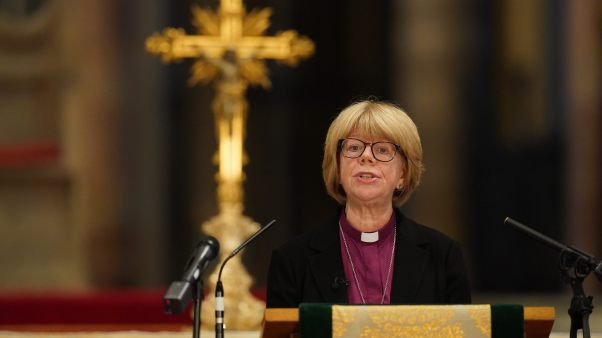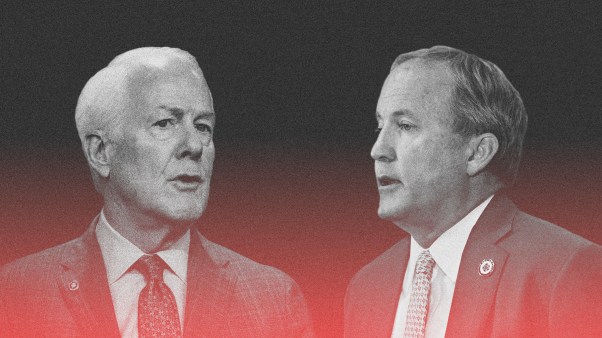Few figures in the Old Testament loom larger than Moses, and few events rival the exodus from Egypt in vividness of detail and in significance for the course of Hebrew history. In the flow of time, the man and event fall somewhere within the fifteenth to thirteenth centuries B.C., most evidence now favoring the thirteenth century. This was the period of the Egyptian Empire and of Late Bronze Age culture in Syria-Palestine, a period very richly, though unevenly, documented in the story of the biblical Near East. In these centuries, Egyptians, Semites, Hurrians (Horites), and Hittites mingled on an international stage.
An Egyptian Heritage
Before the Exodus, the life and labors of the Hebrews were set in the eastern delta within the life of ancient Egypt. The cities of Pithom and Raamses (Ex. 1:11) are familiar from Egyptian records, especially those of the thirteenth century, and Raamses held special prominence as the delta residence of Rameses II. The exodus route itself may be traced with considerable confidence. Succoth (“Tjeku”), Baal-Zephon, and (Pi-ha)hiroth are known in papyri, and more than one “Migdol” (fort). The Hebrews went eastward from Raamses (Qantir) past and near Succoth to the western edge of the wilderness of Etham (near El-Gisr ridge), then doubled back west of north (Ex. 14:2). Finally they journeyed east again through the parted waters of the Sea of Reeds (Hebrew, Yam suf), attested in Egyptian records also, then south by the region of Shur and the east side of Etham (Ex. 15:22; Num. 33:8) to Sinai.
The Hebrews’ life in Egypt long before they marched forth lends itself to comment. There is nothing unusual in the fact that a non-Egyptian child like Moses was brought up in a royal harem, of which there were several in empire times. A late thirteenth-century papyrus mentions young foreigners who lived in a harem in the Fayum, presumably receiving an Egyptian education.
All manner of foreigners, Semites and others, were to be found at all levels of Egyptian society: slaves, peasant-farmers, artisans and craftsmen, merchants, officials and priests, high dignitaries in the administration and at court, even cup-bearers to Pharaoh himself, sometimes then serving as special ministers of the crown. In this cosmopolitan society, not only did foreigners acquire the Egyptian language in addition to their own, but literate Egyptians sometimes prided themselves on their knowledge of foreign tongues and distant places. Into this broad social spectrum, one may easily fit the Hebrews who labored in the brick fields, craftsmen such as Bezalel and Oholiab (Ex. 31:1–6) higher up the scale, and a princely figure like Moses near the top. West Semitic (the early Hebrew or Canaanite language) not only was understood in Egypt but had long been written in a simple alphabet for everyday matters.
The picture of brick-making, the overseers, the need of straw as well as of labor, and the problems of religious holidays pictured in Exodus 5 all accord perfectly with the incidental references to such matters found in the papyri and scrap jottings of the age. These refer to quotas of bricks, lack of straw, and other related matters. The registers of workmen from western Thebes speak of absenteeism, including references to men who went “to offer to their god” (cf. Ex. 5:3, 8). The basic techniques employed for the construction of the tabernacle (a “prefabricated” structure) are no priestly pipedream but had already been known in Egypt for centuries. The techniques of building in this manner would be no mystery to a Bezalel trained in Egyptian workshops. Thus, when the Hebrews left Egypt, some at least took with them a heritage less tangible and more significant than jewels (Ex. 12:35, 36).
Near Eastern Background
Yet the Hebrews were not Egyptians. They were Semites and as such heirs also to the world of Semitic custom and tradition.
In the covenant made at Sinai (Ex. 20 ff.) and later renewed in the plains of Moab (Deut.), there is a counterpart in form (though not in theology) to the layout of covenants and treaties usual in the fourteenth and thirteenth centuries B.C. After about 1200, ways changed in the wake of the sweeping changes that hit the Near East about that date and after. The comparative evidence includes at least two dozen examples showing remarkable consistency in form. The many fewer documents from the first millennium B.C. possess only the essential elements (parties, stipulations, witnesses, curses as “sanctions”), in common with those of Moses’ time, and vary in form, all in striking contrast with the close agreement between the Mosaic covenant and its late second-millennium contemporaries. This clue to the real date of the Sinai covenant and its renewals in Deuteronomy and Joshua cannot be easily dismissed.
The Sinai covenant also contains law, and with the passing of time this became the spiritual constitution for the Hebrew nation and community. As law, the Sinai covenant bears comparison with other collections of law from the biblical world, including three collections from before the patriarchal age: the law of Hammurabi of Babylon, the Hittite laws, and the Middle Assyrian laws. These, with everyday records of actions-at-law, offer a broad vista of popular custom in the biblical world from before Abraham down to just after Moses’ day. Much is comparable—in subject-matter, in modes of formulation, even in similar or parallel terminology. There is no real factual warrant for saying that the Hebrew laws are formulations of the Persian Empire period, when their best analogues sometimes go back to the time of the patriarchs! The modern ideogram “PC” would be better read as “patriarchal core” rather than “priestly code.”
The cleavage between biblical and non-biblical law can be seen in such things as a fundamental difference in emphasis. For example, the biblical laws set a prior value on man, not property, whereas in Babylonia offenses against property (mere things) could be treated more seriously than crimes against life. Here is a contrast conditioned not by time or an imaginary “evolution” but by a basic difference in viewpoint brought about by the biblical revelation.
In matters of religion, the old idea that rituals and consciousness of sin are “late” (that is, after the Babylonian exile) is quite untenable. Quantities of offering-lists, full-scale rituals, and festival programs are attested in Egypt and Mesopotamia from the third millennium B.C. on, and among the Hittites and Canaanites in the second millennium B.C. In their elaboration, these often far outstrip anything to be found in the Pentateuch. In the Egypt of Moses, one finds a considerable consciousness of sin in the modest religious inscriptions of workers at the royal tombs of Thebes, as well as in occasional references going back nearly a millennium earlier.
In the literary field, the Song of Moses and Miriam (Ex. 15) is fine, archaic Hebrew poetry consonant with the late second millennium B.C. These songs are also members of the genre of triumph hymns attested by Egyptian texts from the fifteenth-thirteenth centuries. The oracles of Balaam similarly contain much that is clearly ancient.
A rich variety of other details might be called upon to fill in the overall picture: the use of ox wagons (Num. 7), the long trumpets and their functions (Num. 10), the spies (Num. 13), for which background data exists in Egypt and probably elsewhere also. The same is true of personal names, some Egyptianized (Phinehas), some hybrid (Putiel), and some Semitic (Shiprah and Puah). On every hand, instructive comparisons are found. From the foregoing survey, one point worthy of note is the sheer wealth of highly relevant background information, much of it contemporary with the general epoch of Moses and in some aspects going back in time well beyond it.
The second point is the basic realism of the Old Testament record. Although some points of only limited importance may yet resist full understanding, it is an inescapable fact that these narratives, poems, and laws are not yet in some imaginary land that transcends mortal history but breathe the real life so abundantly attested in the biblical Near East, whether in law or covenant, midwifery or music, hymnody or ritual, geography or technology. Thus, the skepticism so fashionable during the last century or so stands condemned, not merely at the whim of a conservative theology heedful of dogmatics, but inexorably and increasingly at the hands of the re-emergent biblical world itself, elucidated from a flow of raw material by archaeologists and philologians. In short, Moses and his age, exodus and all, must be reckoned as a part of mundane history.
The point is reinforced by our one specific reference to the people of Moses in this age: the mention of Israel as a people in western Palestine on the famous stela of the pharaoh Merenptah (c. 1234/1220 B.C.). Despite occasional aberrations, there can be little real doubt that this is a reference to the biblical Israelites, and (with the Amada stela) it places them with considerable certainty in western Palestine. The Teutonic myopia that, under a smokescreen of methodology, fails to see the obvious will just have to be discarded in the face of externally attested realism.
Part of Living History
Once the external data have restored the epoch of Moses to us, we are brought back to the text of the Old Testament itself in order to reach a real evaluation of the man and his age. Here we see the stream of patriarchal tradition and the experiences of the Egyptian sojourn, which come to their first full flowering at the birth of a nation at Sinai. The Sinai covenant thereafter provides basic guidelines for the Hebrew nation and the spiritual basis of its ongoing community. This can be seen deeply influencing the historical books and the work of the prophets.
A historical profile involving in sequence a formative age (the patriarchs and the sojourn in Egypt), a crucial crystallizing of cultural forms (the Mosaic age and covenant), and the ongoing undulations of history in terms of a basic viewpoint and tradition, is not foreign to the biblical world. One may see this on the grand scale in Egypt, in Mesopotamia, and in other countries. In the former, for example, the first two dynasties saw the formation of Egyptian culture in the fullest sense. In the brilliant Old Kingdom of the Pyramid Age, the typical forms were crystallized and remained fundamentally in force for the two and a half millennia that passed before the Roman period. Many new things were added during that long time, but they were added to an existing basis and outlook. Similarly, the rich theology of Deuteronomy, with its echoes and re-echoes in books like Judges and Kings or with prophets like Jeremiah, shows a long perspective. It is a deformation of history to cite later echoes of a basic viewpoint in order to date everything like it to the seventh to fourth centuries B.C.
The combined evidence of the Old Testament and the rich tapestry of its setting highlight the vital importance and lively reality of the Mosaic age. The question should not be, “Can we believe in a biblical Moses and Mosaic period?,” but, “Will we believe in such?” The total evidence can compel no one to believe. But it points clearly enough in one direction and in its own right cuts the ground out from under those whose “method” is simply to ignore or reject whatever the Old Testament may have to say, under the delusion that they are thereby practicing truly critical scholarship.
The Mosaic period is not a theological shadow play in some never-never land. Its part in the “history of salvation” is played out in the cut-and-thrust encounter of living history.
Milton D. Hunnex is professor and head of the department of philosophy at Willamette University, Salem, Oregon. He received the B.A. and M.A. degrees from the University of Redlands and the Ph.D. in the Inter-collegiate Program in Graduate Studies, Claremont, California. He is author of “Philosophies and Philosophers.”










